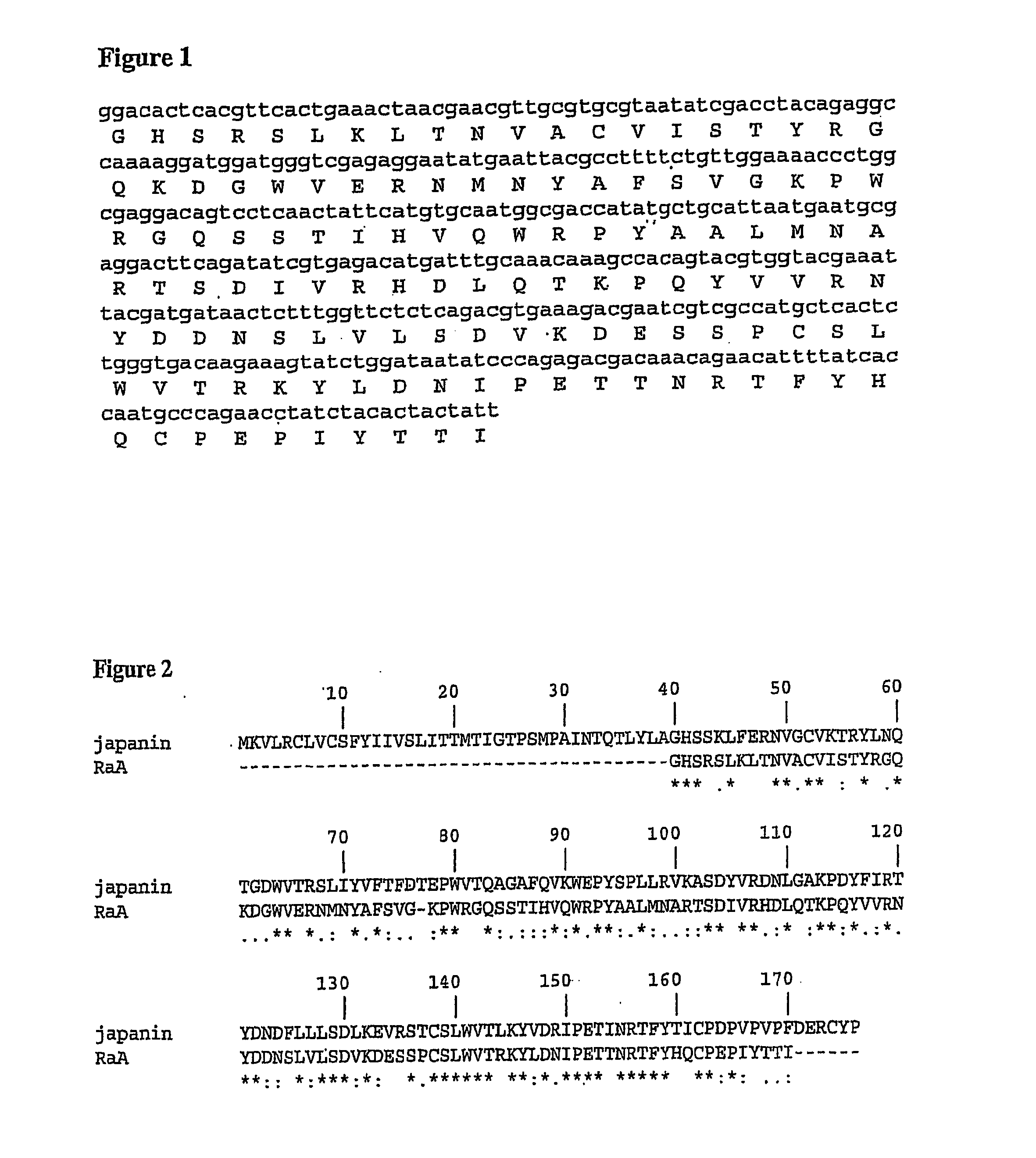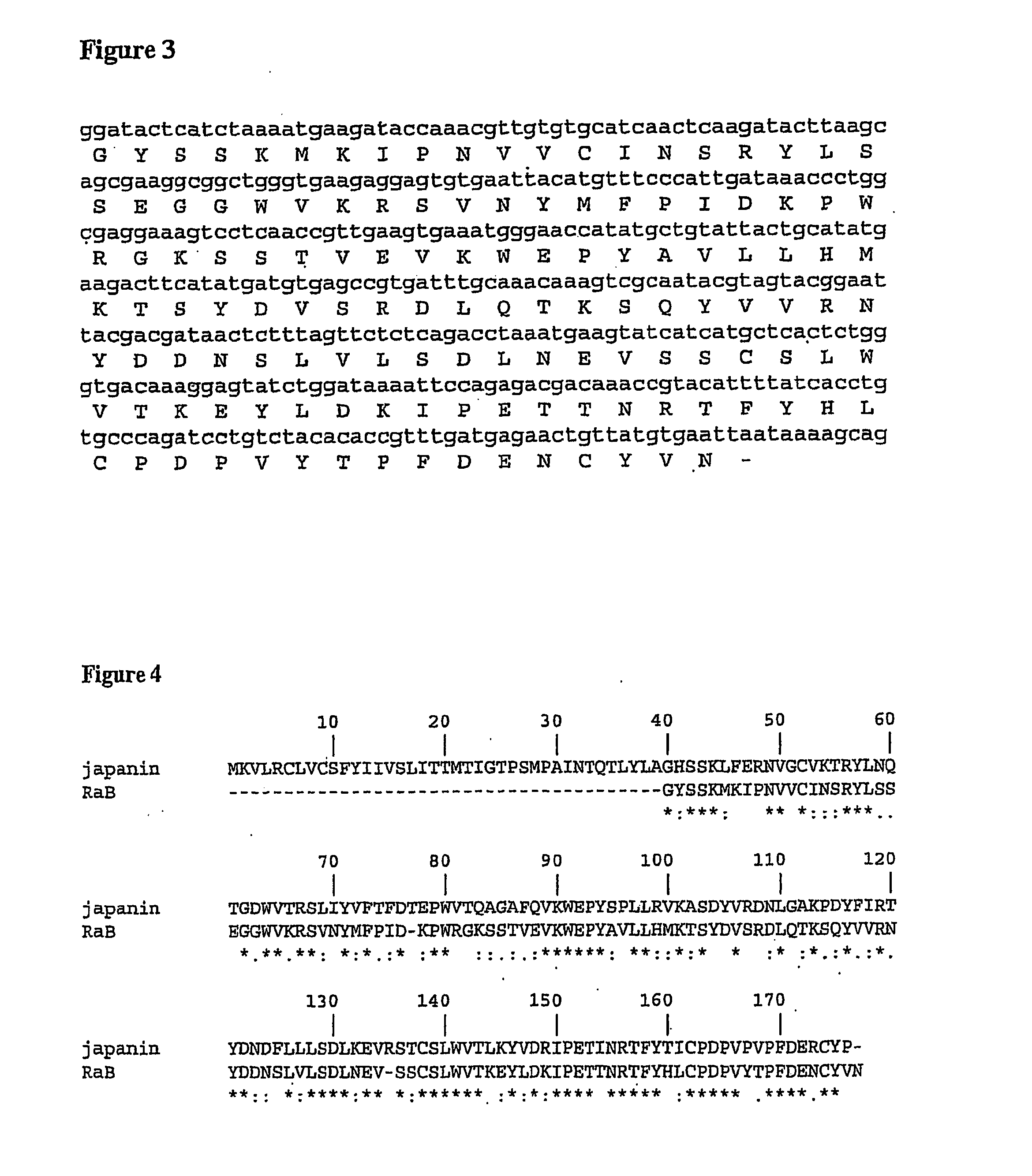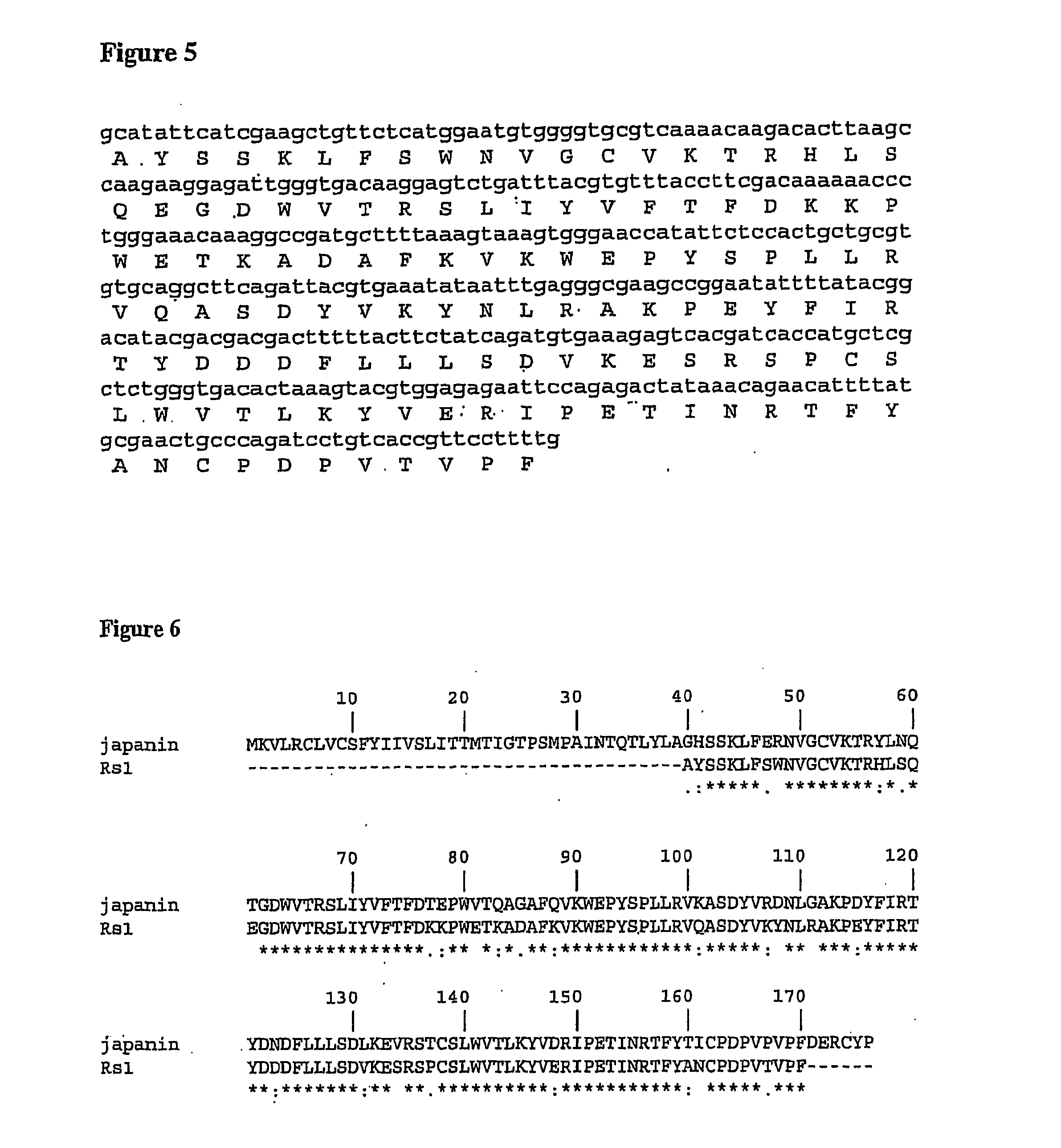Dendritic cell inhibitory proteins from ticks
a technology of dendritic cells and inhibitory proteins, which is applied in the direction of dna/rna fragmentation, peptide/protein ingredients, depsipeptides, etc., can solve the problems of not conferring specific, long-lasting protection against foreign entities, such as invading pathogens, and no evidence that it can inhibit the differentiation and maturation of human dcs, so as to inhibit the differentiation and maturation of dcs
- Summary
- Abstract
- Description
- Claims
- Application Information
AI Technical Summary
Benefits of technology
Problems solved by technology
Method used
Image
Examples
example 1
Identification of RaA, RaB and Rs1
[0258]The incomplete amino acid sequence of the proteins RaA, RaB and Rs1, which are related to Japanin were obtained by amplifying Rhipicephalus cDNAs in expression libraries which were prepared in Lambda Zap II (Stratagene). Amplification was performed by means of the polymerase chain reaction (PCR) using a degenerate, Japanin-derived forward primer (SEQ ID NO: 17) in combination with either a vector specific reverse primer (SEQ ID NO: 18) in the case of RaB or a Japanin-specific reverse primer (SEQ ID NO: 19) in the case of RaA and Rs1.
example 2
Alignment of Japanin with RaA, RaB and Rs1, Respectively
[0259]The amino acid sequences of RaA (SEQ ID NO: 2), RaB (SEQ ID NO: 4) and Rs1 (SEQ ID NO: 6) were each aligned with Japanin (SEQ ID NO: 8) using clustalW with the following options: gap extension penalty=0.1; gap opening penalty=10.0; hydrophilic residues=GPSNDQERK; matrix=gonnet. The results of these alignments are shown in FIGS. 2, 4 and 6, respectively.
[0260]For RaA, of the 131 residues that form the alignment, 61 (46.56%) are identical, 26 (19.85%) are strongly similar and 22 (16.79%) are weakly similar.
[0261]For RaB, of the 138 residues that form the alignment, 73 (52.9%) are identical, 30 (21.74%) are strongly similar and 12 (8.7%) are weakly similar.
[0262]For Rs1, of the 131 residues that form the alignment, 105 (80.15%) are identical, 12 (9.16%) are strongly similar and 7 (5.34%) are weakly similar.
example 3
Alignment of Japanin, RaA, RaB and Rs1
[0263]The amino acid sequences of RaA (SEQ ID NO: 2), RaB (SEQ ID NO: 4), Rs1 (SEQ ID NO: 6) and Japanin (SEQ ID NO: 8) were aligned using clustalW with the following options: gap extension penalty=0.2; gap opening penalty=10.0; hydrophilic residues=GPSNDQERK; matrix=gonnet. The result of this alignment is shown in FIG. 7.
PUM
| Property | Measurement | Unit |
|---|---|---|
| constant current | aaaaa | aaaaa |
| temperature | aaaaa | aaaaa |
| nucleic acid | aaaaa | aaaaa |
Abstract
Description
Claims
Application Information
 Login to View More
Login to View More - R&D
- Intellectual Property
- Life Sciences
- Materials
- Tech Scout
- Unparalleled Data Quality
- Higher Quality Content
- 60% Fewer Hallucinations
Browse by: Latest US Patents, China's latest patents, Technical Efficacy Thesaurus, Application Domain, Technology Topic, Popular Technical Reports.
© 2025 PatSnap. All rights reserved.Legal|Privacy policy|Modern Slavery Act Transparency Statement|Sitemap|About US| Contact US: help@patsnap.com



